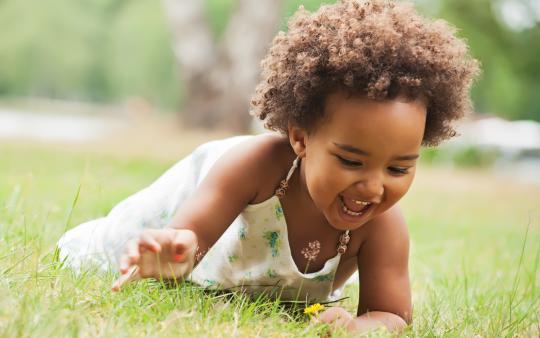It’s a scary world out there! The earth is warming, habitats are disappearing, animals are going extinct, there is plastic in the ocean, and there are close to 8 billion people on the planet, with each person wanting their share of food, shelter, and stuff! If you’re a kid, you might be thinking: “You want me to do what? Fix it? I didn’t create this mess! What’s the point? It’s all going downhill anyway!” As parents, we want to inspire and empower our children to become environmental stewards, building hope instead of harbouring “ecophobia” (afraid to do anything positive for the environment because it all seems so hopeless). No matter how young your kiddos are, they can become an engaged steward at every age and stage of their development.
Raising environmentally engaged citizens doesn’t happen by itself. As Simeon Ogonda, a youth development leader from Kenya, phrased it: “Many of us often wonder what kind of planet we’re leaving behind for our children. But few ask the opposite: what kind of children are we leaving behind for our planet?” We are collectively responsible for fostering the stewards of tomorrow and activating the next generation is more important than ever.
Studies have shown that children today are more anxious, more distracted, and less healthy than the last generation. It may be hard to believe but the average child spends more than seven hours a day in front of a glowing screen and less than 20 minutes in active outdoor play! At the same time there is mounting evidence that exposure to nature while growing up reduces stress, improves physical and mental health, stimulates creativity, builds self-esteem, and encourages co-operation, collaboration, and self-regulation. The work of Joy Palmer, an environmental educational researcher, found that regular exposure to nature is the single most important factor in fostering care and concern for the environment.
Getting Kids on the Pathway to Stewardship
Stewardship means a sense of connection to, caring about, and responsibility for each other, and the natural world around us.
If we truly want to foster the environmental citizens of tomorrow, we need to involve our entire community. The Pathway to Stewardship and Kinship, a program being developed in Peterborough, Ontario, Canada is a great example of just that. A collaboration between educators, professors, Indigenous leaders, public health officials, and conservationists, the aim is to find ways for every child in the region to participate in key stewardship experiences regardless of age or stage.
The Pathway group recognized that children need to be provided with the right opportunities, tools, and experiences to know, love, respect, and protect the very life systems that sustain and nurture us all. This includes learning from Indigenous teachings, especially in the way that many First Nations view their relationship with the land. For example, the Anishinaabe (Ojibway) word Nwiikaanigana (roughly meaning “all my relations”) embodies the idea that we are part of a much larger family that includes the natural world. Being a steward does not imply entitlement, power, or dominion over the earth; rather, it means teaching children to use their powers to become engaged citizens of and for the earth.
Everyone, no matter their age or ability, can do something positive for the environment. Tending a garden, raising butterflies, caring for a natural area or reducing energy consumption, are just some of the simple ways we empower our youth to make a positive impact in their own community. From an Indigenous perspective, acting with responsibility means responding with our abilities. Every positive action leads to a sense of hope. And every bit of hope is empowering.
Imagine the journey of stewardship as a pathway. Along this journey, children need certain experiences in nature and in the world around them as they grow to become activated stewards, and each experience generates the confidence to develop new ones. Here is a brief guide to what you can do with your children to foster stewardship.
STEWARDSHIP: A GUIDE FOR THE AGES
Develop these core stewardship principles as your children grow with opportunities that are all around you!

Early Years (Birth to 3 years)
Exercise the senses everyday
- Be a “stroller explorer” in your local green spaces and parks.
- Turn over rocks and logs to see what lives underneath.
- Watch ants to see where they go.
- Dig in soil, wade in water, pick up sticks, roll in the grass, jump in mud puddles.
Have positive experiences with animals at least once per week
- Watch birds come to a feeder.
- Pet a gentle cat or dog.
- Look for worms and watch them crawl.
- Read nature books about animals.
Young Children (Ages 4 to 7)
Exercise the senses every day
- Cup your hands behind your ears, what do you hear?
- Smell flowers, smell the rain, smell the grass and the earth.
- Be an “all around watcher”: What can you see in nature?
- Sample seasonal tastes: berries in summer, apples in fall, squash in winter.
Deepen relationships and understanding
- Choose an outdoor place to explore and play in. Visit regularly.
- Provide loose parts for kids to manipulate (sticks, stones, tree slices).
Reinforce and expand the developing sense of empathy
- Plant, tend, and harvest something that can be eaten.
- Encourage moths and butterflies with their favourite plants.
- Care for an animal.
Celebrate seasons
- Find simple ways to recognize and enjoy the change of each season.
Cultivate sensory awareness of nearby nature
- Identify natural sounds and smells. Listen to crickets!
- Explore micro-environments (peek under rocks/logs, create a mini trail).
Encourage knowledge of their “neighborwood”
- Get to know plants, birds, and five insects living in your area.
- Create a mural that depicts the characters of your neighborwood. Our community consists of other living things, as well as humans and built structures.
Offer a creative response to time spent outside
- Develop art projects using natural materials.
- Create a story or a play about the characters in your neighborwood.

Middle Childhood (Ages 8 to 11)
Develop more complex outdoor skills
- Try non-motorized outdoor activities, such as hiking, survival skills (shelter building, fire making, foraging wild edibles), orienteering, birding, and astronomy. Spend at least seven hours a week practicing.
Build an outdoor play shelter with found materials.
Explore human impact on the environment
- Create a small naturalized area.
- Manage a school recycling or composting project.
- Plan a small stream/river clean-up project.
- Make a poster or video to educate your community about your project.
- Research and write about the history of the piece of land you occupy.
Expand understanding of the relationships between living things and their habitats
- Explore biodiversity in a nearby natural area. Conduct a small-scale bio-physical inventory, finding at least 10 species each of plants, animals and insects. Explain three ways this ecosystem helps the environment.
- Get involved in citizen science projects: monitor bird, butterfly and amphibian populations.
- Monitor ecosystem health by conducting basic water and soil tests.
Expand understanding of sustainable lifestyles
- Be an energy detective. Find out what kind of energy is used for heating, cooling, lights and appliances at home or school. What different renewable energy systems can you observe in your region?
- Design an energy efficient home that’s healthy for both people and the planet. Think about using natural materials, passive solar design, rainwater harvesting, renewable energy, innovative ways to treat human waste.

Older Children (Ages 13 and older)
Expand skill and confidence in outdoor awareness, responsibility, and survival
- Research the meaning of sustainable harvest. How can the environment provide for our needs without being damaged by human impact?
- Learn how to find your way in a natural area using maps, compass and/or GPS.
- Learn to recognize at least two constellations in the sky each season.
- Learn how to tell the four directions using clues in the sky.
Deepen understanding of how modern lifestyles affect the environment.
- Calculate your ecological footprint. Research how your country’s lifestyle consumes global resources, and how this compares with other countries. What does sustainability mean?
- Make a goal for yourself for reducing your ecological footprint. Try it for a month and assess how successful you’ve been. Get your family and school involved too.
Explore and respond to local social and environmental issues
- Find an organization that is making a difference in your community. Volunteer.
- Teach someone younger than you an outdoor skill.
- Find someone to tell you how your area has changed over the years.
- Find a local hero who is working to protect the environment. Arrange for them to speak at your school.
- Volunteer in a natural area to help with trail maintenance, ecological restoration or control of invasive species.
- Participate in planning, planting, maintaining, and monitoring a tree-planting project. Was it successful? Would you change anything?
Learn about social and environmental justice
- Find an issue of local concern that needs to be solved. How does this issue align with global issues? Get involved.
- Learn simple action skills: how to make a presentation, how to write a convincing letter, how to organize an event. Learn how to listen and try to understand multiple points of view.
- Find a mentor who can help you do more to solve this problem.
Express your feelings about your local environment
- Write a story, a poem, create a visual art piece, or write a play that captures your feelings about the land you occupy.
- Write a letter to your ancestors. What would you say is worth protecting for your children and for their children?
We hope to see you on the Pathway!
To find out more about the Pathway Project, visit pathwayproject.ca






